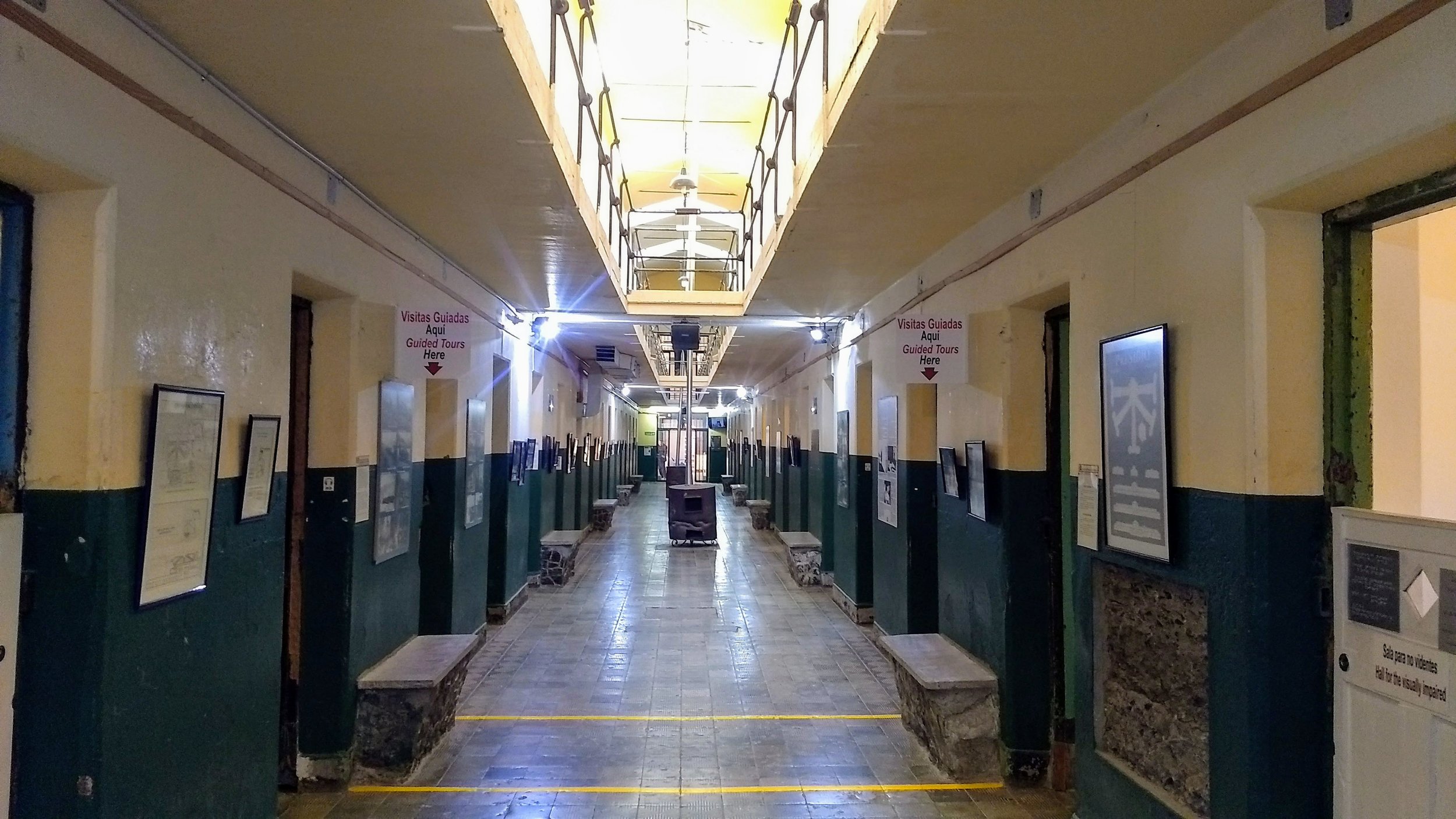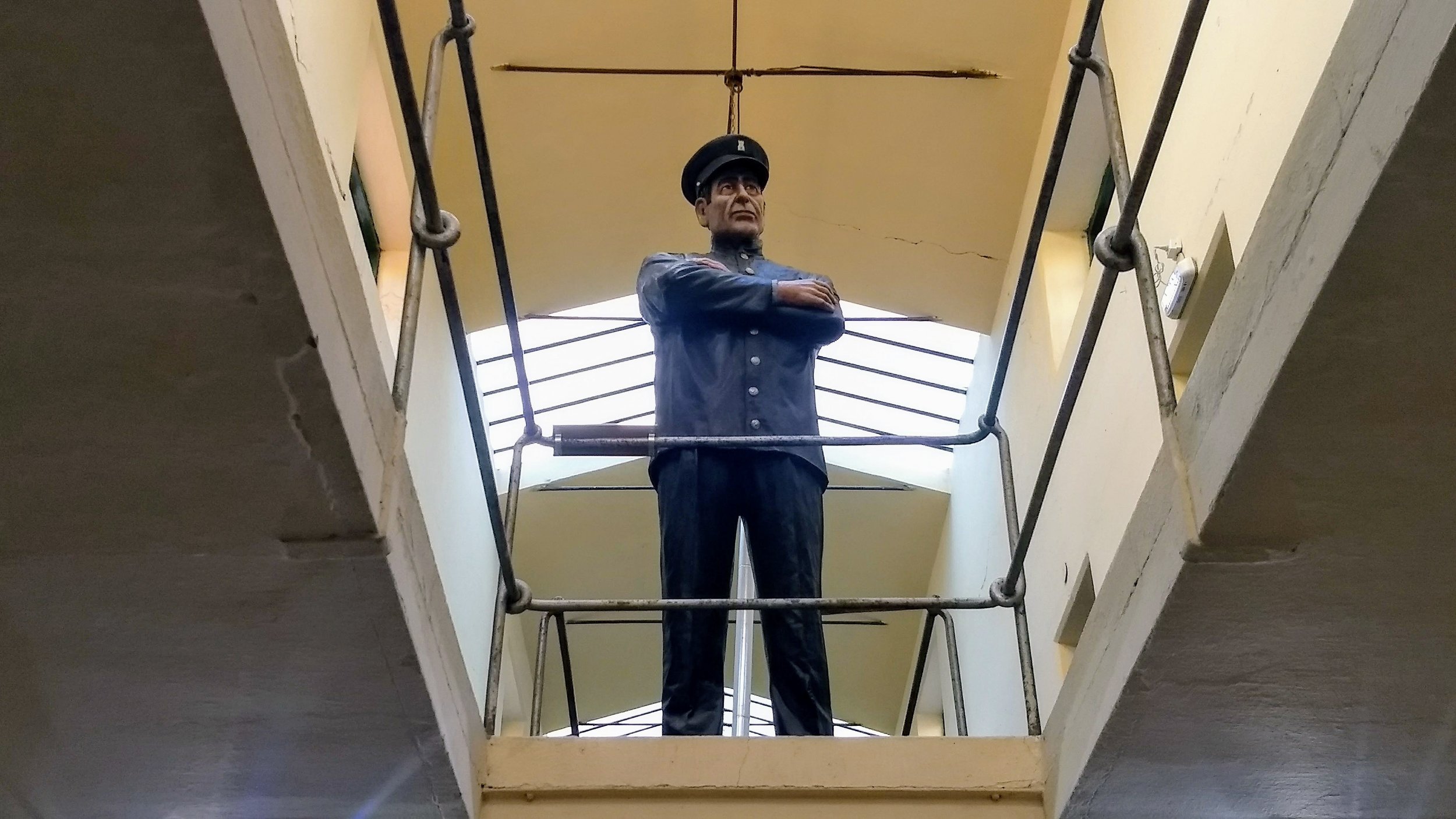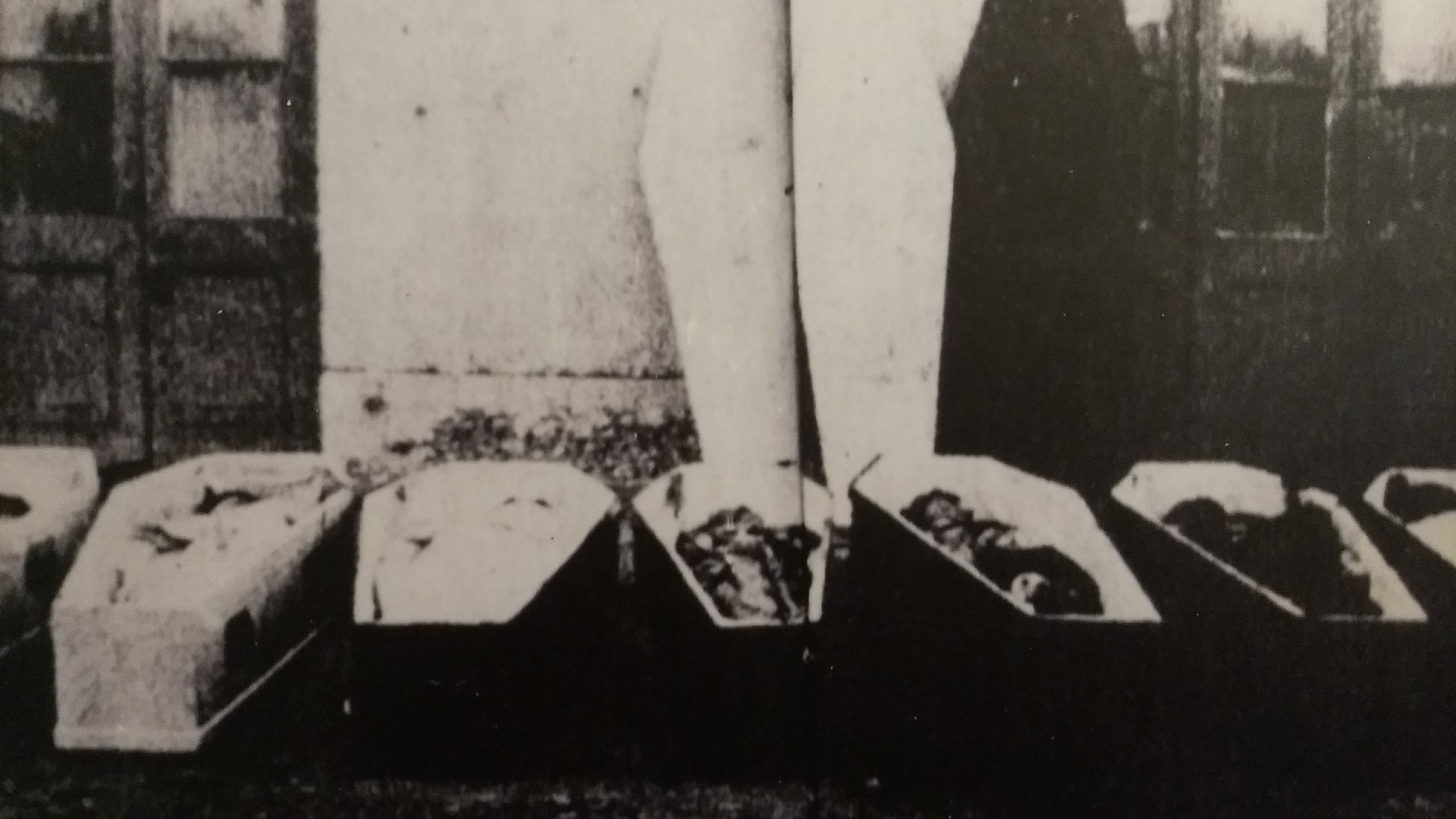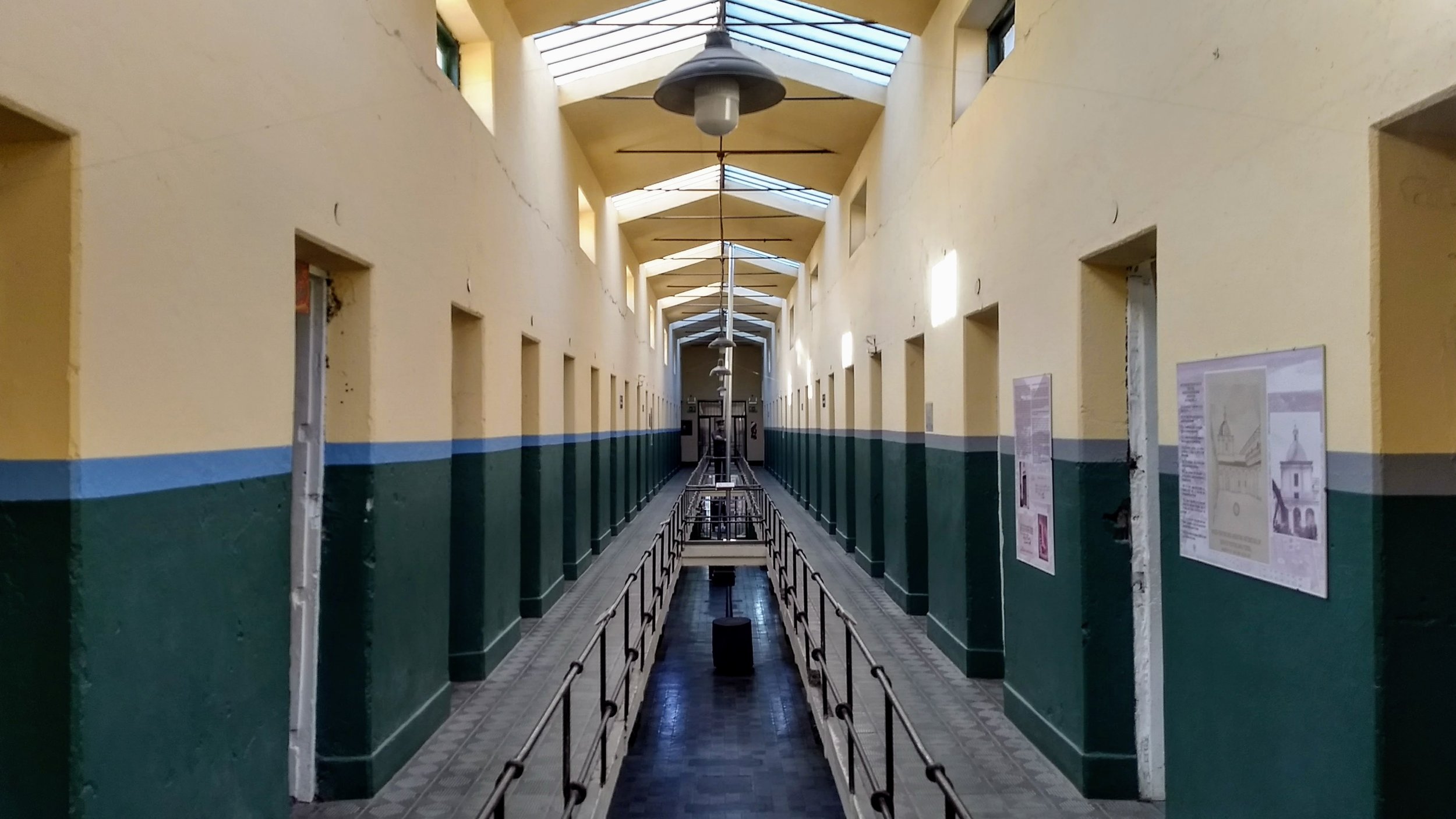
MUSEUM OF THE PRISON OF USHUAIA
MUSEUM OF THE PRISON OF USHUAIA
We invite you to walk the narrow corridors, peer into the cells to imagine what life would have been in jail.
The most dangerous convicted the country lost its name a number. Through the gates of the Historic Pavilion it is to step back in time.
Some achieved great notoriety as the serial killer Mateo Banks who was called "the mystic", Cayetano Santos Godino sadly known as "petiso orejudo (big-eared shorty)" and anarchist Simon Radowitsky.
Indoors, severe discipline imposed. Those who had good behavior work performed outside the building as logging in forests to arriving on the train from the city center. Through workshops, prisoners covered all the needs of the emerging city. They built the roads, bridges and public buildings and in the prison ran the first printing press, the telephone, electricity, among other essential services.
Prisoners Train
Famous Prisoners
The Military Prison of Isla de los Estados
HISTORY OF THE PRISON
The Military Prison that used to operate in Isla de Los Estados, first in San Juan de Salvamento and later in Puerto Cook, was transferred to Ushuaia in 1902 for humanitarian reasons. There were some scarce 40 houses in Ushuaia at that moment.
The place chosen was Puerto Golondrina, east of the city. It was here that the provisional building was installed, the Military Prison began to fulfill its functions, between metal sheet houses and sheds brought from the Island of the States. It worked from 1902 to 1911 in which the Military Presidio is merged with the Prison of Reincidentes. The Military prisoners from that moment shared the confinement with the civil prisoners. There were intentions to establish a penal colony, but this was not fruitful.
Construction of the "Presidio Nacional" began in 1902 and finished in 1920. Labour was supplied by the prisoners themselves. In 1911, the President signed a decree which fused the Military Presidio with the Penitentiary for repeat-offenders or "Cárcel de Reincidentes de Ushuaia". The original idea was to build a "Penal Colony" for 580 inmates in Lapataia Bay. Some 2.500 hectares of land that was on the border with Chile were reserved for this purpose.
In 1920, the Penitentiary had 5 pavilions with 76 external cells each. The 386 cells were all designed for the occupancy of only one prisoner, but the penitentiary at one point had some 600 inmates.
The kitchen was set up between Pavilion 1, otherwise known as the "Historic Pavilion" and Pavilion 2, and the bakery was set up between pavilions 1 and 5. The workshops were located in separate buildings. It was only in 1943 that a modern hospital established on the premises. This hospital was later to become the Naval Base Hospital and for a long time it was to be the only one in the area.
The Central hall, or "Multiple Rotunda" was used as a conference room, movie theatre and auditorium.
Numerous delinquents who had committed serious crimes came to be incarcerated here through the course of time, some serving life imprisonment and others serving considerably long sentences. Inmates were paid for their work, elementary-school education was offered and severe discipline was the norm.
The penitentiary had 30 work sectors, some of them were off the premises. The workshops that were installed catered to the penitentiary´s own needs and also offered some services to the entire city of Ushuaia. Among these services we find the first printing service in the city, along with telephone, electricity, firefighting, etc.
Inmates were taken off the premises as a source of manual labour in tasks such as the construction of streets, bridges, buildings and obtaining lumber. This is how, in 1910, the southernmost train in the world came to be built. It was 25 km. long and its route followed alongside Maipú street, passing by the camp at Monte Susana and dividing in two separate routs, heading towards what is nowadays the National Park. The penitentiary also relied on several vessels, with "La Godoy" being the most notorious.
In 1947, with the change in designation from National Territory to a Maritime State, the National Presidency declared the closure of the penitentiary. The installations were transferred to the Marine Ministry. and a Naval Base was established in it in 1950.
Text extracted from the book "El Presidio de Ushuaia" edited by the Maritime Museum
PRISONERS TRAIN
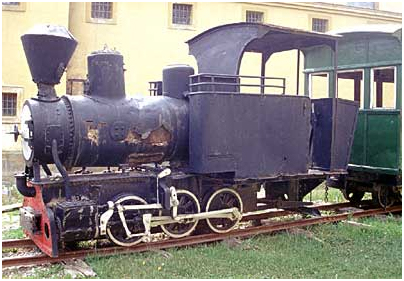

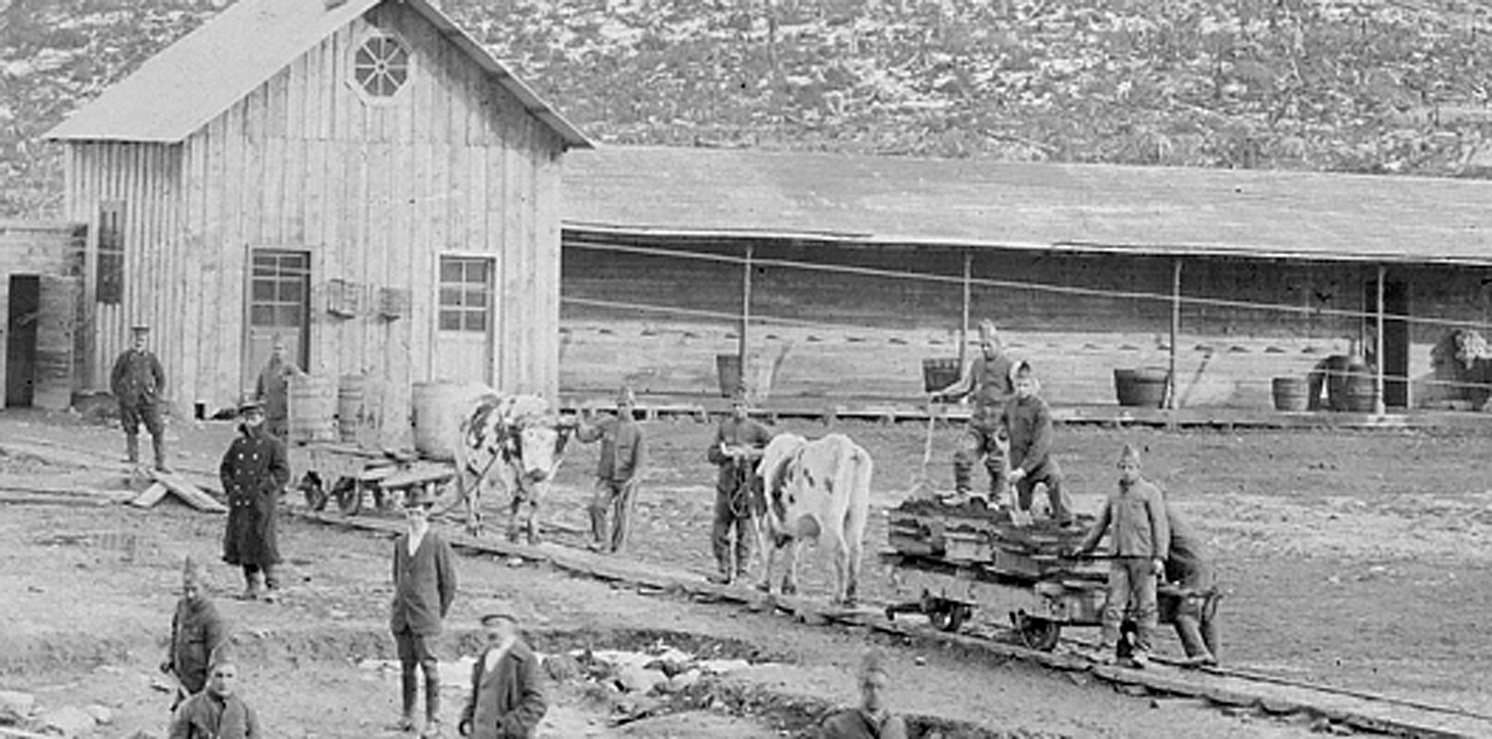
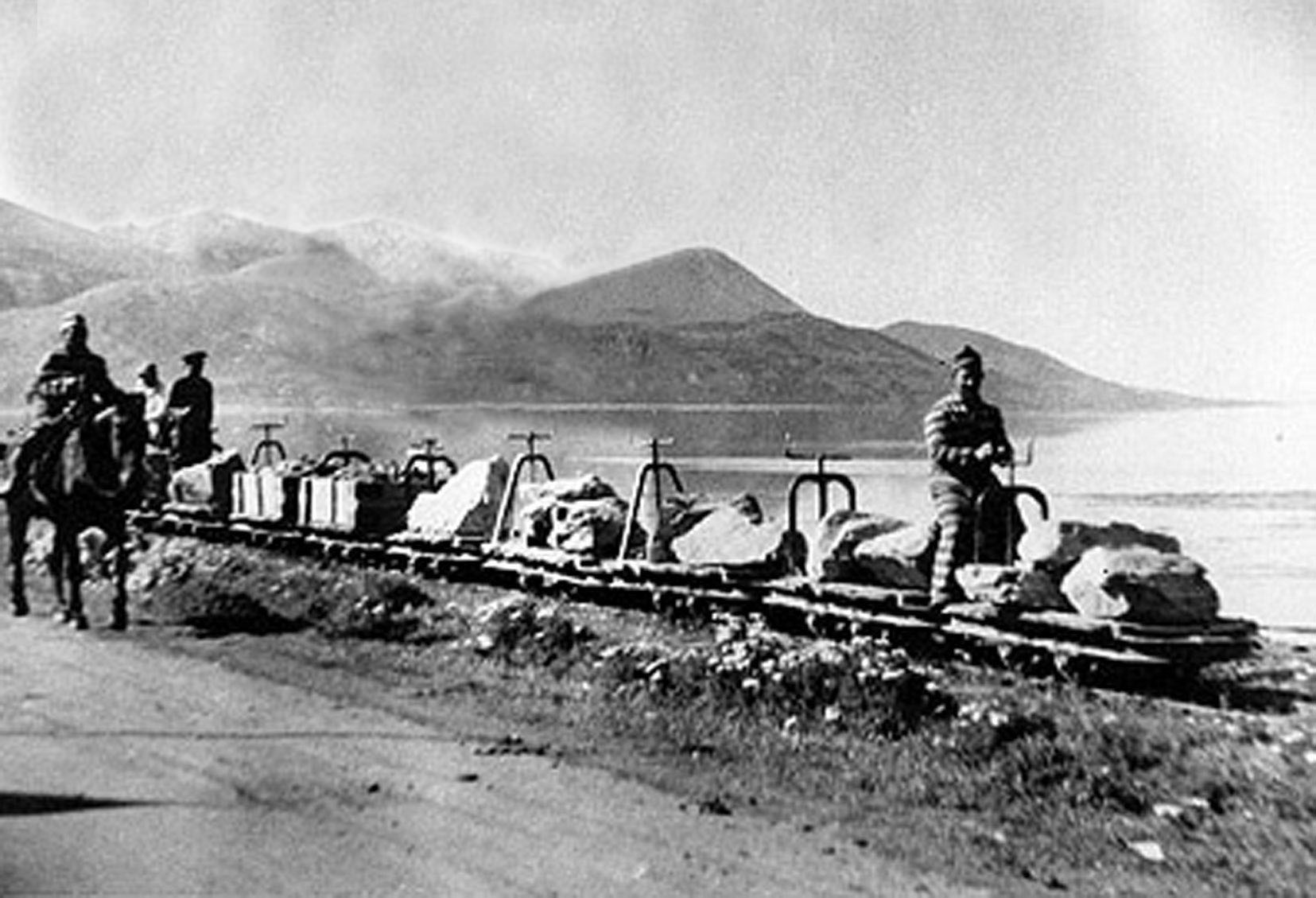

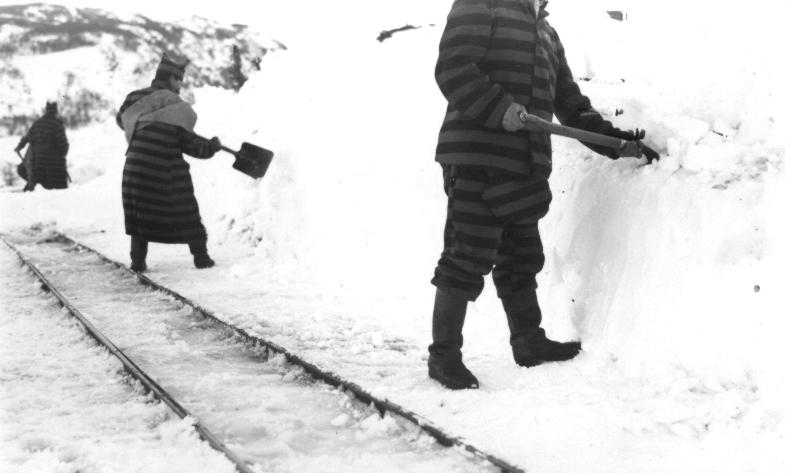
Features: 600-mm gauge
Owner: Ministry of Justice, Penitentiary Service
Function: Transportation of timber and stones for the Penitentiary Service. Loading and unloading of goods from the pier to the Prison.
Length: It varied as time went by, and it reached over 22 km.
Locomotives: As shown in photographs, it had an Orenstein & Koppel and a Jüng. The former probably dates from 1910 and the latter from 1928. There may have been more locomotives.
Rolling stock: Small wagons, most likely Orenstein & Koppel, and a coach probably manufactured at the Prison using bogies from small carts.
It is known that it used to have wooden rails and was called Xylo-carril (wooden railway). Its small wagons were pulled by oxen.
Material about the Decauville found at the Prison of Ushuaia:
In Memoria del Ministerio de Justicia (1903), p. 610: it states that the xylo-carril was built.
In Memoria de Justicia (1915) there is information about the railway's exploitation.
RN 1911/4, p. 418, Resolution 11/18/11: Decree authorizing the acquisition of 3,000 m of rail, six trucks and flatcars, and a 25-HP steam locomotive (purchase in the market).
BO 4/10/13, Decree 3/29/13, Purchase of machinery for workshops. Among the suppliers we find O & K for the extension of the Decauville.
BO 1/8/24, Decree 11/14/23: "Guard 3º Juan Moreira is appointed mechanic for the locomotive of Tierra del Fuego as from the first of the current month substituting Antonio Celvatto, whose resignation is accepted."
BO 5/27/24, Decree on the reorganization of the Prison's staff: "The mechanic in charge of the locomotive is Ángel Chicato."
BO 10/6/31, Decree appointing a locomotive driver for the Prison of Tierra del Fuego.
BO 10/17/31, Decree to pay Orenstein & koppel for the supply of spare parts for the Prison of Ushuaia. No further details.
BO 10/26/31, Decree appointing Manuel Rodríguez locomotive driver.
Jorge Eduardo Waddell, April 2000
Note: BO (Boletín Oficial, Official Bulletin) RN: (Registro Nacional, National Records).
